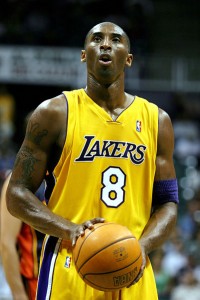Sporting organisations often behave like copycats. They see a formula for success and mimic it, pursuing their own taste of triumph. But they also seek to adapt certain elements, improve the formula, make it uniquely difficult to beat and become the next benchmark for others to replicate.

In the NBA, ‘the big three’ is a highly successful formula, and unlike many that quickly get superseded, it’s one that has certainly stood the test of time. In fact, the modus operandi of the big three has been applicable for several decades.
From 1957 to 1969, the Boston Celtics were almost invincible. Winning 11 of 13 titles during that period, the longevity of their dominance is unlikely to ever be repeated. They built their dynasty around three Hall of Famers: point guard Bob Cousy, centre Bill Russell and forward Tom Heinsohn.
Boston were again a force to be reckoned with during the 1980s, and the foundation was again three-fold. Shooting guard Larry Bird, power forward Kevin McHale and centre Robert Parish led the Celtics to three championships in six seasons between 1981 and 1986, and are widely regarded as the original big three setup.
As impressive as the Celtics were during the 80s, the decade largely belonged to their fierce rivals the Los Angeles Lakers. Making the NBA finals eight out of 10 seasons and emerging victorious on five of those occasions, guard Earvin ‘Magic’ Johnson, centre Kareem Abdul-Jabbar and forward James Worthy formed the Lakers powerhouse trifecta.
In the 1990s, the Chicago Bulls took over the reigns. Led by Michael Jordan, along with small forward Scottie Pippen and flamboyant forward Dennis Rodman, the Bulls won two separate championship three-peats.
More recently, the San Antonio Spurs earned three championships between 2002 and 2007 with Tim Duncan, Tony Parker and Manu Ginobili, while Boston won the 2007/08 title with Paul Pierce, Ray Allen and Kevin Garnett.
Of course last season’s champions Miami Heat must be mentioned too, possessing perhaps the most talented big three ever assembled: Lebron James, Dwayne Wade and Chris Bosh.
There are numerous examples, and amid all the evolutions in the game, all the efforts to curtail or trump it, history shows that the big three has remained a reliable blueprint for NBA teams to thrive. Yet this off-season, we may have finally seen a shift in focus.
How do you beat a big three? You create a big four.
The logic seems so easy. Four quality players should out-do three, and thus increase the likelihood of glory. However, the widespread inability to harness anything greater than a big three illustrates the complexities involved.
Attracting multiple superstars to your franchise, or developing them from within, then fitting them into a $58.044 million salary cap is a significant challenge, as is getting those stars to share responsibility on the court.
The latter issue was evident at Miami in the early days of the James-Wade-Bosh partnership. Now with Wade respecting his secondary role supporting James, and Bosh also understanding his place, the interplay has blossomed. But that did take its time, and only involved three members.
Despite the difficulties, the challenge of producing a four pronged attack is being increasingly accepted.
Having acquired veteran Steve Nash and Dwight Howard to accompany Pau Gasol and legend Kobe Bryant, the Lakers incredibly contain four genuine all-stars.
Not to be outdone, Miami’s recruitment of Ray Allen has presented the Heat with its own awesome foursome.
The thought of the champions from South Beach and the Lakers getting even better is frightening for the rest of the competition, and is likely to heap pressure on other title aspirants, such as Chicago and Oklahoma City Thunder, to add or develop high quality depth.
Suddenly, a big three may not be enough to yield the ultimate results.
A major benefactor from these developments will be the spectators. Grouping larger talent pools into single rosters undoubtedly makes for sensational viewing. James, Wade, Bosh, Allen and new addition Rashard Lewis versus Bryant, Howard, Gasol, Nash and Metta World Peace is as mouth-watering as any matchup in recent memory.
The performance of Oklahoma’s big three (Kevin Durant, Russell Westbrook and James Harden) and San Antonio’s (Tim Duncan, Manu Ginobili and Tony Parker) in the western conference last season suggests both sides will have strong claims on the title in 2012/13.
Similarly, 2011/12 regular season eastern conference leaders Chicago and the Celtics will rightfully believe they have the pieces to the championship puzzle.
However, the Lakers and Heat shape as the teams that could stand in their way, setting up a fascinating battle between the tried and true big three, and the unknown potential of the big four.
Paul Bastin is a third-year Bachelor of Media Studies student at La Trobe University. He is the current deputy sports editor for upstart. You can follow him on Twitter: @paulbastin10






